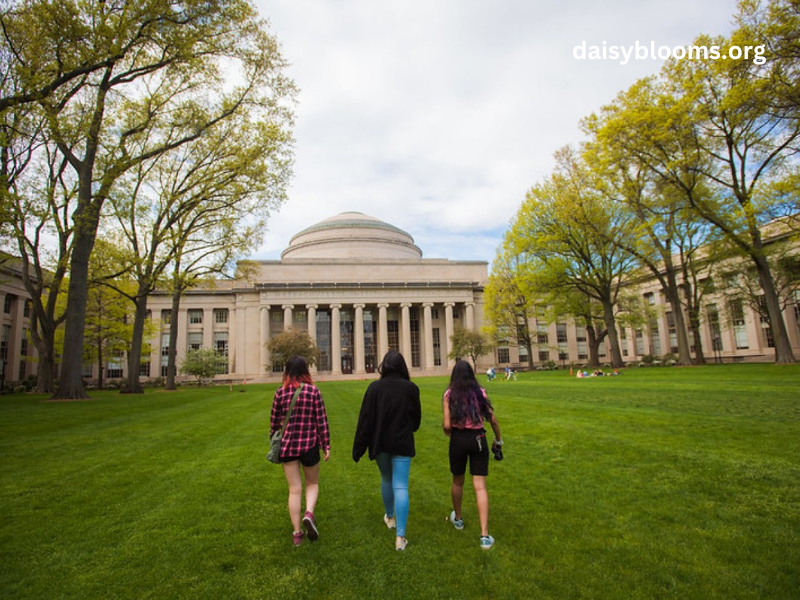The Massachusetts Institute of Technology (MIT) is one of the most prestigious institutions in the world, renowned for its cutting-edge research and innovation across various fields, including engineering, computer science, and the natural sciences. However, the cost of attending MIT can be a significant consideration for prospective students and their families. In this article, we will explore the various aspects of the costs associated with attending MIT, including tuition fees, living expenses, financial aid options, and the return on investment for graduates.
Overview of MIT Tuition Costs
As of the 2023-2024 academic year, the undergraduate tuition at MIT is approximately $59,750 per year. This figure represents a significant investment in education, reflecting the quality of the faculty, the resources available to students, and the institution’s commitment to research and innovation. Tuition costs at MIT have historically increased at a rate slightly above inflation, which means prospective students should anticipate similar trends in the coming years.
Graduate tuition varies by program. For example, the tuition for a graduate student at MIT can range from $53,790 to $57,590 per academic year, depending on the specific school within the institute. Additionally, certain programs may have additional fees or require additional costs for materials and resources.
Additional Fees and Costs
In addition to tuition, students should be aware of various fees that can contribute to the overall cost of attendance. These may include:
- Student Life Fee: Approximately $372 per year.
- Health Insurance: Mandatory health insurance can cost around $4,272 per year, though students may waive this fee if they provide proof of comparable coverage.
- Activity Fee: Students are often charged an activity fee, which is roughly $172 annually, to support campus organizations and events.
Living Expenses at MIT
Living expenses are another essential factor in calculating the total cost of attendance at MIT. Students typically live in dormitories or off-campus housing, and the costs associated with housing, food, and personal expenses can add up significantly.
Housing Costs
On-campus housing at MIT can vary based on the type of accommodation chosen. For the 2023-2024 academic year, the estimated cost of room and board is approximately $18,620. This includes:
- Room: Costs range from $8,940 to $13,500 per year, depending on the type of housing.
- Meal Plan: The standard meal plan costs about $4,862 per year.
Personal Expenses
In addition to housing, students should budget for personal expenses, including:
- Books and Supplies: Estimated at around $1,000 annually.
- Transportation: Depending on location and travel needs, transportation costs can vary widely but are often estimated at $1,200 per year.
Total Estimated Living Costs
Combining these figures, the estimated total cost of living expenses for a student at MIT can be around $30,000 per year. Therefore, when factoring in tuition and other associated costs, the total estimated cost of attendance at MIT can exceed $89,000 annually.
Financial Aid and Scholarships
Given the high costs associated with attending MIT, many students rely on financial aid and scholarships to help cover expenses. MIT is committed to ensuring that all admitted students can afford to attend, regardless of their financial circumstances.
Need-Based Financial Aid
MIT provides a robust need-based financial aid program, which is designed to meet the full demonstrated financial need of all undergraduate students. This means that if a student’s family income falls below a certain threshold, MIT will provide aid to cover the remaining costs after accounting for what the family can contribute.
For the 2023-2024 academic year, MIT’s financial aid awards average $55,000, significantly reducing the burden on students and their families. Notably, students from families with incomes below $90,000 often pay no tuition.
Scholarships and Grants
In addition to need-based aid, MIT offers various scholarships and grants based on academic merit and other criteria. While these awards can significantly help reduce the overall cost, the focus remains primarily on need-based financial support.
Work-Study Opportunities
Students at MIT also have the option to participate in work-study programs, allowing them to earn money through part-time jobs on campus. This can help offset living expenses and provide valuable work experience.
The Return on Investment
When considering the cost of attending MIT, it’s essential to evaluate the return on investment (ROI) for graduates. MIT alumni are among the highest earners in the nation, with a median starting salary of around $85,000 per year. Over the course of their careers, MIT graduates can expect to earn significantly more than their peers from other institutions.
Graduate Employment Rates
The employment rate for MIT graduates is also impressive, with nearly 94% of graduates securing employment within six months of graduation. Many graduates go on to work for top-tier companies in technology, finance, and consulting, further enhancing their earning potential.
Long-Term Earnings
According to various studies, the long-term earnings potential for MIT graduates can exceed $1 million over their lifetime compared to graduates from non-elite institutions. This high ROI makes the upfront costs of attending MIT more palatable for many students and families.
Alternative Cost Considerations
While the costs of attending MIT are high, prospective students should consider the various benefits of attending such a prestigious institution. Some alternative considerations include:
Networking Opportunities
MIT’s extensive alumni network provides students with connections and resources that can lead to job opportunities, mentorship, and collaboration throughout their careers.
Cutting-Edge Research
Students have access to state-of-the-art facilities and resources, enabling them to engage in groundbreaking research that can significantly impact their fields of study.
Diverse Programs
MIT offers a wide range of programs, allowing students to tailor their education to their interests and career goals. This diversity can be beneficial in today’s job market, where employers value interdisciplinary knowledge and skills.
Conclusion
Attending the Massachusetts Institute of Technology is a significant financial investment, with tuition and living costs totaling over $89,000 per year. However, the potential return on investment, in terms of high earning potential, job security, and valuable networking opportunities, makes MIT an attractive option for many students.
For those considering applying to MIT, understanding the full cost of attendance and the financial aid options available is crucial. With a strong commitment to need-based financial aid and a track record of graduate success, MIT continues to attract some of the brightest minds from around the globe, making it a valuable choice for those seeking an exceptional education in a stimulating environment.
By weighing the costs against the potential benefits, students can make informed decisions about their education and future careers, ensuring they are well-prepared for the challenges and opportunities that lie ahead.


